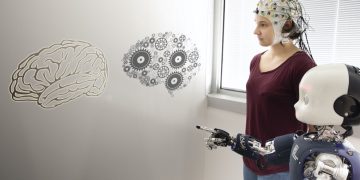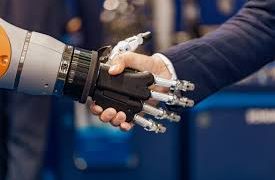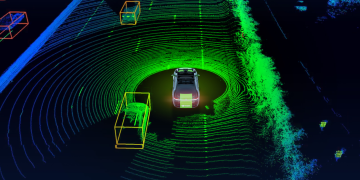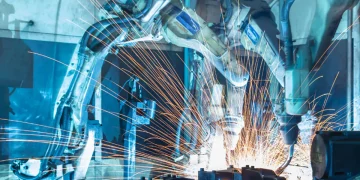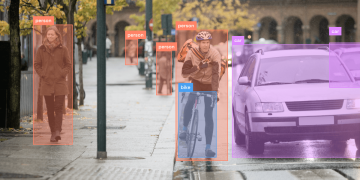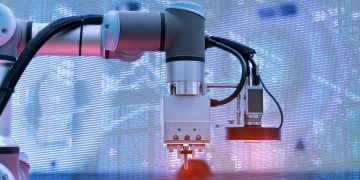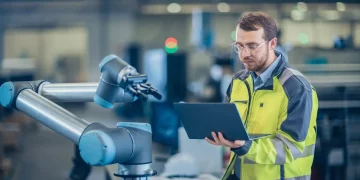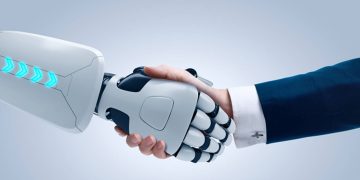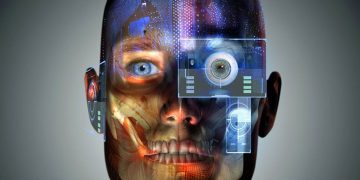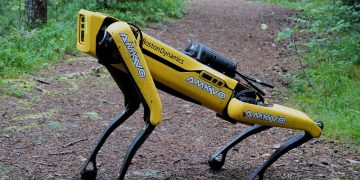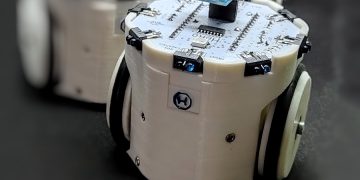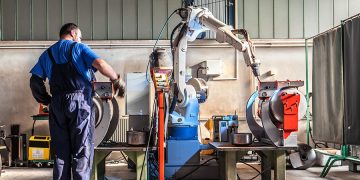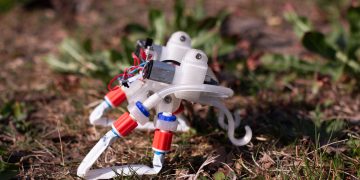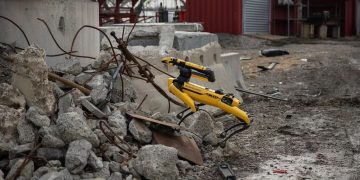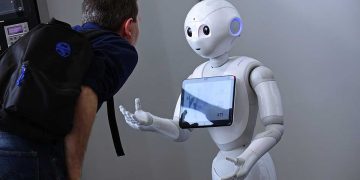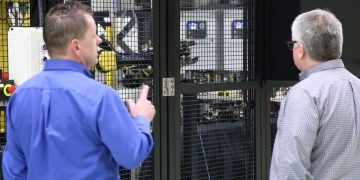As industries evolve, the boundaries between human labor and robotic automation become increasingly blurred. In the modern workplace, where technology plays a central role in driving productivity, the seamless interaction between humans and robots is essential for achieving optimal efficiency. The ability to dynamically adjust the allocation of tasks between human workers and robotic systems, based on real-time changes in the work environment and task demands, holds the key to maximizing productivity, reducing errors, and enhancing worker safety. This article delves into the concept of dynamic human-robot task allocation, explores the factors that influence task distribution, and discusses how adaptive systems can be used to optimize human-robot collaboration in varying work environments.
Introduction: The Need for Dynamic Human-Robot Task Allocation
The introduction of robotics into the workplace has revolutionized many industries by automating repetitive, dangerous, or highly precise tasks. However, the real value of robotics in the modern workplace comes not from replacing human workers, but from augmenting their capabilities. By dynamically adjusting the allocation of tasks based on the specific needs of the task at hand and the conditions of the work environment, human-robot collaboration can be optimized for maximum efficiency.
Dynamic task allocation involves distributing tasks between robots and humans in a flexible and adaptable manner. Unlike fixed task distribution models, where tasks are predefined, dynamic task allocation adjusts based on factors such as workload, skill levels, and real-time environmental conditions. This allows both humans and robots to work together more effectively, responding to changing demands and improving overall workflow.
Understanding Dynamic Task Allocation
Dynamic human-robot task allocation is the process of assigning work to humans and robots based on a variety of factors, such as the complexity of the task, the physical capabilities of the worker, and the real-time performance of both the human and the robot. Several elements need to be considered in this process to ensure that the most suitable tasks are assigned to each participant in the collaboration.
Key Factors in Dynamic Task Allocation:
- Task Complexity and Skill Requirements
Some tasks require a high level of cognitive decision-making, creativity, and problem-solving, areas where humans excel. Others are physically demanding or require repetitive precision, which is where robots shine. Task complexity dictates whether the robot or the human should take the lead. Tasks that involve judgment, decision-making, or creative input are typically suited to humans, while tasks involving routine processing, heavy lifting, or precision movements are better suited for robots. - Real-time Performance Data
Robots are equipped with sensors and software that allow them to monitor their own performance in real-time. Similarly, humans can provide feedback, make adjustments, or perform tasks in ways that robots cannot. Through continuous monitoring, both robots and humans can adapt to the current state of a task. For example, if a robot is facing difficulties with a specific task, a human worker can step in to provide assistance, or the task may be reassigned to a robot that is better suited to handle it. - Workload and Environmental Conditions
The environment in which the work is being performed is constantly changing. Factors such as temperature, noise, space constraints, and even the presence of hazardous conditions can influence the allocation of tasks. In high-stress environments, such as factories or emergency response teams, real-time adjustments are critical to maintaining safety and productivity. Robots may be tasked with high-risk activities in dangerous environments, while humans may focus on tasks requiring flexibility and adaptability. - Human-Robot Interaction (HRI)
Effective communication and collaboration between humans and robots are crucial to dynamic task allocation. The robot must be able to interpret human instructions, respond to feedback, and adjust its actions accordingly. Similarly, the human worker must understand the robot’s capabilities and limitations to optimize collaboration. Ensuring that robots and humans can seamlessly communicate is a key element in dynamic task allocation.
Technologies Enabling Dynamic Human-Robot Task Allocation
To effectively manage dynamic task allocation, several technologies and systems are employed to enable robots and humans to work together efficiently.
- Artificial Intelligence (AI) and Machine Learning (ML)
AI and machine learning play a crucial role in dynamic task allocation by allowing robots to learn from their environment and adapt their actions accordingly. Through AI, robots can analyze real-time data and adjust their behavior based on changes in the work environment. For instance, if a robot is assigned to an assembly task and the human worker encounters an issue, the robot can adjust its approach or alert the worker to the problem. Over time, AI can optimize task allocation by learning from past experiences and predicting which tasks will yield the best results for both humans and robots. - Multi-Agent Systems (MAS)
Multi-agent systems consist of multiple independent entities (robots and humans) that interact to achieve a shared goal. In dynamic task allocation, multi-agent systems can be employed to manage the distribution of tasks between humans and robots. These systems use algorithms that assess the capabilities of each agent (robot or human) and allocate tasks based on predefined rules or real-time data. For example, in a manufacturing environment, a MAS can adjust the work assignments of robots and human workers depending on factors such as task priority, current workload, and worker skill. - Robotic Process Automation (RPA)
RPA involves the use of robots to automate repetitive and time-consuming tasks. RPA is often used in combination with dynamic task allocation to handle tasks such as data entry, customer service inquiries, or inventory management. When combined with AI and machine learning, RPA systems can adjust their behavior based on workload changes or task complexity, allowing for dynamic adjustments in task distribution. This allows human workers to focus on higher-level tasks that require creativity, decision-making, and problem-solving. - Sensor Networks and IoT
The Internet of Things (IoT) refers to a network of connected devices that can communicate with one another, often in real-time. In a human-robot collaborative environment, IoT-enabled sensors can monitor various aspects of the work environment, such as temperature, humidity, and machine performance. By collecting this data, robots can make real-time decisions and adjust their tasks based on changing environmental conditions. For instance, in a factory, sensors can detect equipment malfunctions, prompting a robot to switch to a different task or alert a human worker to take action.
Applications of Dynamic Human-Robot Task Allocation
- Manufacturing and Assembly Lines
In modern manufacturing, robots are used to automate tasks such as assembly, packaging, and quality control. However, the complexities of assembly lines mean that task allocation must be dynamic. For example, if a robot encounters an error while assembling a part, a human worker can step in to assist or take over the task. Additionally, robots may be assigned tasks based on their capabilities, such as handling heavy objects, while humans focus on tasks requiring fine motor skills or decision-making. AI and machine learning algorithms can continuously assess which tasks should be handled by robots and which should be assigned to humans. As conditions change on the assembly line (e.g., variations in demand, machine breakdowns, or fluctuations in workforce availability), the task allocation can be adjusted in real-time to maintain optimal efficiency. - Healthcare and Surgery
In the healthcare sector, particularly in robotic-assisted surgery, dynamic task allocation is essential for ensuring precision and patient safety. Robots may be used for minimally invasive surgeries or to assist in complex procedures. However, human surgeons are required to make judgment calls, address complications, or adapt to unforeseen circumstances. A dynamic task allocation system can allow for the seamless transition of tasks between robots and human surgeons. For example, a robot may assist with a surgical incision, while the surgeon takes over during a critical phase of the operation. Additionally, robots can provide real-time diagnostic data or handle tasks that require repetitive precision, allowing human doctors to focus on more intricate aspects of patient care. - Logistics and Warehousing
In logistics, robots are increasingly used for tasks such as sorting, packaging, and moving items. However, warehouses often require human intervention for tasks like order picking, customer service, and supervision. Through dynamic task allocation, robots and humans can collaborate to ensure that the flow of goods is optimized and that tasks are assigned based on real-time conditions. For example, if a robot is assigned to move goods but encounters an obstacle, the task can be reassigned to another robot or a human worker can step in to assist. Additionally, if demand spikes, robots can be deployed to handle more routine tasks, while humans focus on higher-value activities such as inventory management or customer service. - Autonomous Vehicles and Transportation
In the field of transportation, autonomous vehicles (AVs) are increasingly used to handle logistics and delivery. However, dynamic task allocation is essential for the integration of AVs with human workers. For instance, in a delivery setting, robots may be tasked with transporting goods to a pickup location, while human drivers take over for final deliveries to customers. As traffic conditions or road hazards change, the system can adjust the task distribution accordingly, ensuring that deliveries are made efficiently and on time.
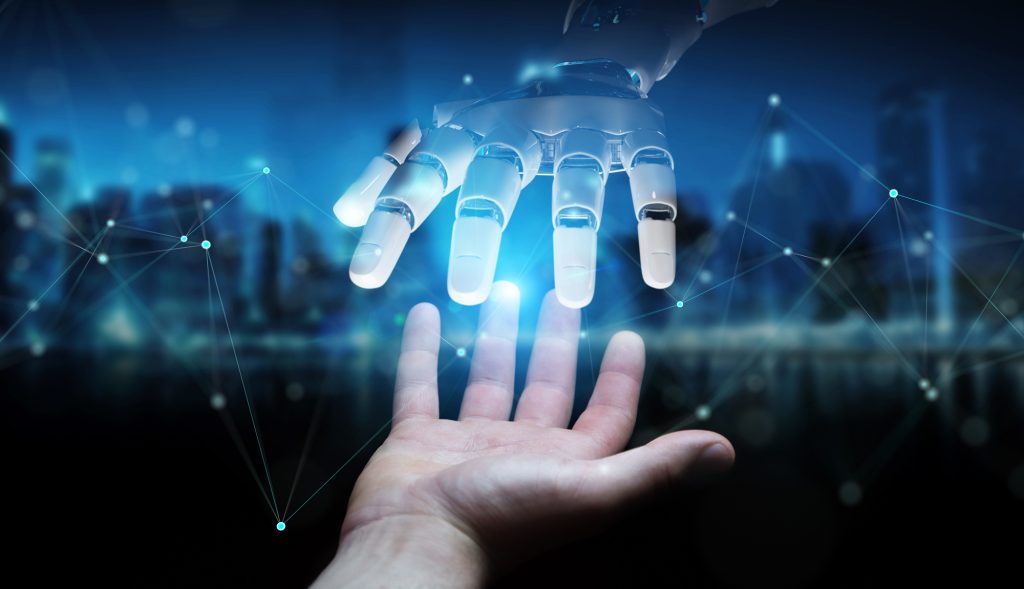
Challenges in Dynamic Human-Robot Task Allocation
- Complexity in Real-time Decision-making
The dynamic nature of human-robot collaboration means that task allocation must be adjusted continuously based on real-time conditions. Developing systems capable of making these decisions autonomously is a significant challenge. Advanced algorithms and AI models are required to analyze data and predict the optimal task distribution, which can be computationally intensive. - Workplace Acceptance and Training
For dynamic human-robot collaboration to be successful, workers must be trained to work alongside robots. This requires a shift in mindset and the development of new skills. Ensuring that workers understand how to interact with robots and adapt to changing task assignments is key to optimizing collaboration. - System Integration and Compatibility
Integrating dynamic task allocation systems into existing workflows and infrastructure can be complex. Different robots, sensors, and software platforms may need to be harmonized to enable seamless communication and collaboration between humans and robots. - Safety and Ethical Concerns
Ensuring that dynamic task allocation does not compromise safety or lead to unintended consequences is crucial. Ethical considerations must also be addressed, particularly regarding how tasks are assigned between humans and robots, ensuring that no worker is put at risk or unfairly burdened by the system.
Conclusion
Dynamic human-robot task allocation holds the potential to revolutionize workplace efficiency by enabling robots and humans to collaborate more effectively in real-time. By adjusting task distribution based on factors such as task complexity, workload, and environmental conditions, businesses can achieve higher productivity, fewer errors, and improved worker safety. However, realizing the full potential of dynamic task allocation requires overcoming technical, logistical, and social challenges. As AI, machine learning, and robotics continue to evolve, the future of human-robot collaboration looks promising, offering a pathway to more adaptable, efficient, and intelligent workplaces.


